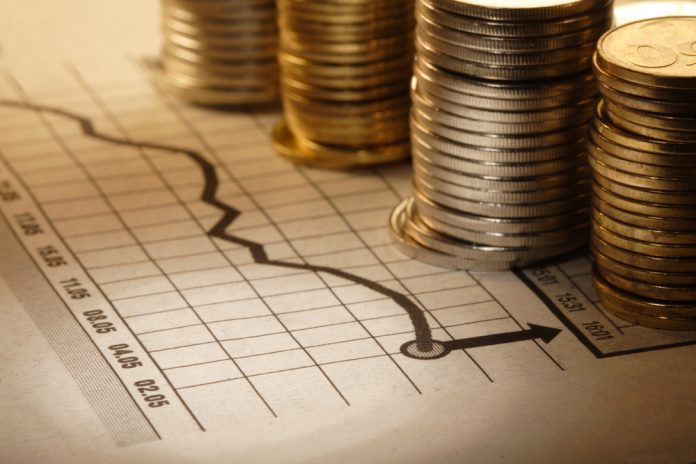This article is written by Bhumika Dandona from School of Law, Sushant University, Gurgaon. This article deals with all the aspects of money supply in general and the M3 measure of the money supply in particular.
Table of Contents
Introduction
Money is a necessity for everyone. It can drastically enhance the quality of our lives. It is anything that people exchange for obtaining their basic requirements such as food and shelter etc. There is no strict definition. Money also adds to the efficiency of an economy by enabling smooth financial transactions. Thus, determining the flow of money in the economy is crucial for boosting macroeconomic performance.
What is money supply?
The money supply, also known as monetary aggregates is nothing but the circulation of money in an economy at a particular point in time. Since it is concerned with a specific point of time, it is called a ‘stock concept’. Mentioned below are the components of the money supply:
- Currency with the public.
- Demand deposits of the public.
Here, the term ‘public’ means those who make actual use of money, that is, households, firms and institutions. The government and the banking system are not a part of it because they produce money. Cash reserves held by them do not come into the circulation process.
Importance of money supply
What makes money supply of utmost importance is the fact that it regulates the growth of an economy. An increase in the money supply brings down the interest rates, which leads to a rise in investments by the people. A decrease in the money supply will have the opposite impact. Thus, its management becomes an essential requirement for achieving economic development and price stability. Analyzing the money supply from time to time helps economists to develop appropriate fiscal policies. These policies then assist in dealing with undesirable levels of inflation or deflation.
Concept of the M3 measure of the money supply
In 1977, the Reserve Bank of India introduced four measures to estimate the total amount of money in the economy. One of these is the M3 measure of the money supply.
The M3 in money supply includes all the components of the M1 measure of the money supply (currency in possession of the public, demand deposits with commercial banks and other deposits with the RBI) and net time deposits with the banks. Time deposits are those deposits that have a specified period of term for maturity and interest rates.
The M3 measure is a broad concept and is also known as – aggregate monetary resources of the society.
Why is M3 the favourable measure in India?
The working group on fiscal reforms under the guidance of late Professor Sukhamoy Chakravarty recommended using the M3 measure of the money supply for developing policies.
- This measure reflects almost all the cash in circulation, with both the public and financial institutions.
- There seems to be a positive relationship between the growth of the M3 money supply and that of inflation. It means that a deficient M3 money supply can lead to a negative impact on the other variable.
- Also, this measure is the most stable out of all the others since it includes fewer liquid components.
These are the possible reasons behind such a recommendation and why the RBI decided to shift to the M3 measure.
Other measures of the money supply
The other three measures apart from the M3 are as follows:
The M1 measure of the money supply
The M1 measure of the money supply includes the following:
Currency and coins in possession of public
- It consists of paper notes and coins in possession of the public.
- It is also known as Legal tender money because one can legally use it for making payments.
- Another name it is known by is Fiat money which means that currency and coins serve as a medium of exchange on the government orders.
Demand deposits of the public in possession of commercial banks
- It consists of demand deposits of the public held by the commercial banks. Demand deposits are those deposits that one can encash by furnishing cheques.
- It is similar to currency and coins in possession of the public since people readily accept it as a means of payment.
- Deposits held by the banks on behalf of the other banks do not constitute such demand deposits.
Other deposits in possession of RBI
- It includes deposits of foreign banks and governments, other financial institutions and international organizations such as IMF and the World Bank etc. in possession of the RBI.
- However, accumulations of the government of India and commercial banks do not constitute such deposits.
This measure of the money supply is a narrow concept. It is also known as transaction money as one can use it for making direct transactions.
The M2 measure of the money supply
The M2 measure of the money supply includes all the components of the M1 measure of the money supply and saving deposits with post office saving banks. It is slightly less narrow than the M1.
The M4 measure of the money supply
The M4 measure of the money supply includes all the components of the M3 measure of the money supply. It also comprises the total deposits with post office saving banks. Here, the National Savings Certificate (NSC), a savings bond for savings on income tax, is subject to exclusion. This measure is a broad concept.
Reserve money or the M0 measure
In addition to the above-specified measures, there is the Reserve money or the M0 measure of the money supply. It includes currency in possession of the public, deposits of banks with the RBI and cash reserves with the banks. This measure of the money supply is also known as the monetary base and high-powered money. It is as narrow as the M1 measure.
Nature of the measures of money supply
- The M1 measure of the money supply is the most liquid measure out of all the others because one can easily convert its components into cash.
- The M2 measure of the money supply is less liquid than the M1 measure. It is because the savings deposits with the post office saving banks are not as easy to convert into cash.
- The M3 measure of the money supply is less liquid than the M2 measure. It is because its components are more of a store-of-value than readily acceptable for exchange.
- The least liquid measure out of all the others is the M4 measure.
An overview of M3 and other M classifications
The table below provides an overview of all the measures of the money supply.
|
M Classification |
Components of classification |
Liquidity |
Type |
|
M1 |
Currency and coins in possession of public + Demand deposits of the public in possession commercial banks + other deposits in possession of RBI |
It is the most liquid measure. |
It is a narrow classification. |
|
M2 |
M1 + saving deposits with post office savings banks |
It is less liquid than the M1 measure. |
It is a classification less narrow than the M1 measure. |
|
M3 |
M1 + net time deposits |
It is less liquid than M2 measure. |
It is a classification less broad than the M4 measure. |
|
M4 |
M3 + total deposits with post office savings banks |
It is the least liquid measure. |
It is a broad classification. |
|
M0 |
Currency in possession of public + cash reserves |
It is as liquid as the M1 measure. |
It is an even narrower classification than the M1 measure. |
Conclusion
The M3 measure is the best indicator of cash flow in the economy. Because of having a direct relationship with the inflation rate, its analysis helps in creating adequate policies. The other measures are less likely to replace it, at least in India. They are just supplemental to this particular measure.
References
- https://www.economicsdiscussion.net/money-supply/money-supply-importance-concepts-determinants-and-everything-else/10477
- https://www.mql5.com/en/economic-calendar/india/rbi-m3-money-supply-yy
LawSikho has created a telegram group for exchanging legal knowledge, referrals and various opportunities. You can click on this link and join:
 Serato DJ Crack 2025Serato DJ PRO Crack
Serato DJ Crack 2025Serato DJ PRO Crack











 Allow notifications
Allow notifications



